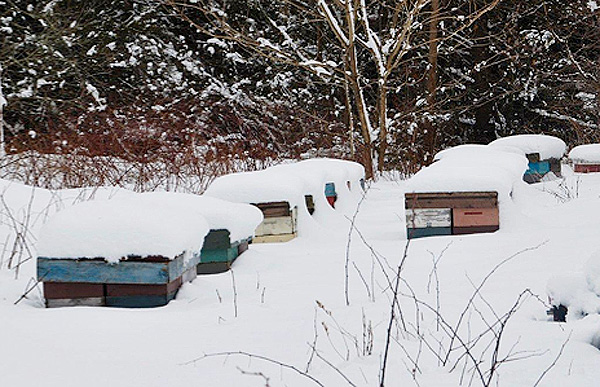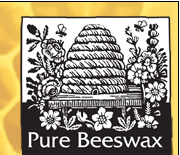Only a few of our beehives are located on land we own. The vast majority are located on over 50 other farms across four Nova Scotia counties.
We spend a lot of time on the road. In the spring we visit all the yards to see how the bees survived the winter and to check queen and colony health. We closely watch the weather and the progression of flowering plants from which the bees gather nectar and pollen to feed their young. The earliest of these flowers are inconspicuous: the willows, alders, and maples that flower before they leaf out. Spring flowering bulbs such as crocuses are a joy to watch, with many bees hovering, waiting their turn to sip from the blossoms. The most important spring flower to every beekeeper and beehive? The lowly dandelion. It blooms early and in such abundance that with a few warm days a bee colony that was on the verge of starvation will a week later be filled with honey and pollen, and overflowing with bees and their brood.
Later in spring we move most of our hives into the orchards and blueberry fields to pollinate fruit crops over the course of a few weeks. In the summer and fall the bees collect nectar from clovers and wildflowers to create honey. August sees the beginning of the honey harvest, and this continues into October when we begin to prepare the bees for winter. In November we place insulation under the hive covers and wrap the hives, tucking them in to keep out the cold. In winter there is no bee work, so we just think and dream about bees. |
 |
Cosman & Whidden on the road for bees |
|
 |
Tom is using a smoker to calm the bees down while he works with them. |
| |
 |
| Beekeeper Lauren Park preparing some of the many thousand honey supers that are placed on the hives and harvested each year. These are the boxes where the bees store honey surplus to their own needs. |
| |
 |
|
By August, hives often have many supers.
This is the apiary in our back yard in Greenwich. When we
pull honey, we leave the two bottom bee boxes so the bees
have honey for the winter.
|
| |
 |
In winter, the worker bees cluster around the queen. The outer bees insulate the inner bees and the inner bees flex their flight muscles so quickly that they create warmth. The bees slowly shift inwards, taking turns enduring the cold. The queen stays in the centre. While summer worker bees only live six weeks, winter ones live the whole season. |
| |
|









